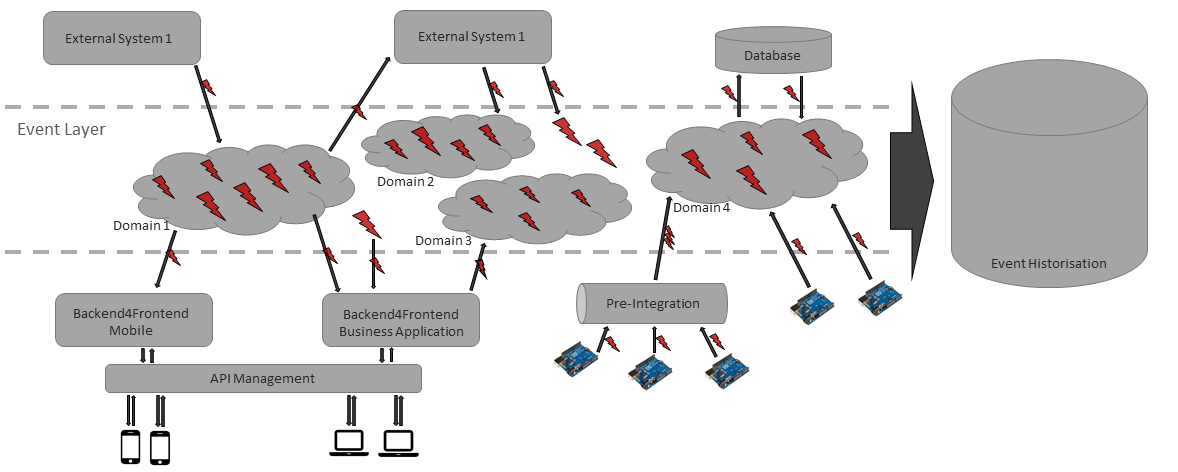Integration as the foundation for Digitization
All the different IT trends and technology hypes out there have one thing in common - that is data. It does not matter if you talk about IoT, IIoT, Mobile Computing, Big Data or Web Development. Basically, all of these topics store, at some point, data about customers, interactions and workflows, which is used for analytics. Data is used for various purposes: deeper insights into business processes, improvement of products, customer journeys and much more. Although data of a single application or domain has in itself some value; only the combination of different data sources results in deep knowledge.
Someone might wonder: what does this mean now and how can I combine the different data sources to get all benefits out of my data? The answer is a classical discipline which becomes quietly and secretly more and more important: integration
Classical approaches like process, bash or service oriented driven integration architectures are still valid and are working fine. Nevertheless, there are new challenges and aspects these approaches have to come along with.
Due to digitization, there are new aspects for integration, too:
- integration is not only about getting data from system A to system B - more and more people are influenced directly by integration processes. In Mobile Computing, for example, a broken interface to the order system causes the inability of customers to buy new products. Emergency systems in cars will not work with broken integration processes.
- More and more people are stakeholders of certain integration processes.
- Especially in IoT scenarios developers have to care about assets, device updates and management - not only big software systems are integrated anymore
- The semantic of data is changing. A few years ago integration was mainly driven by master data. Nowadays, integration deals a lot with “real time” data and events.
- Data is becoming obsolete faster.
- Distribution is increasing.
- Integration does not take place in the same network anymore. It has more layers. For example, a pre-integration in the cloud is followed by an ESB based integration on-premise.
- Security is becoming more important.
Observing the market, there is a tendency to meet these challenges with a further layer in the integration architecture, which is sometimes called the digital integration hub.

Basically, the digital integration hub supports an event driven architecture approach. It integrates existing integration approaches like process driven bpm solutions, batch jobs or service oriented architectures with an event layer. Every state change like updating a database entry or a successful computation of a batch job result in an event. Events, based on interactions with UI components or data from smart sensors, are also added to the event layer. As a result, you get the best of all worlds. A fully integrated application landscape, that is modular and designed for change. Applications can consume events, run stream analytics on the events and provide deeper insights into company processes. Moreover, if all of the events are logged, a fundamental database for Big Data, AI and Machine Learning is created, so that we are getting back to the topic of this blog article: integration as the foundation for digitization.